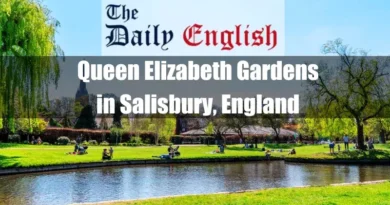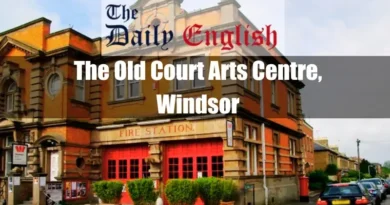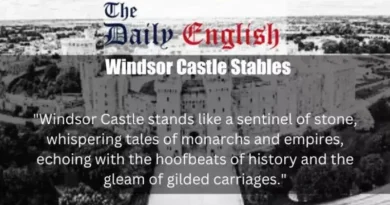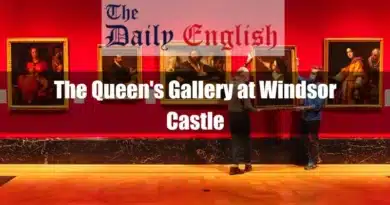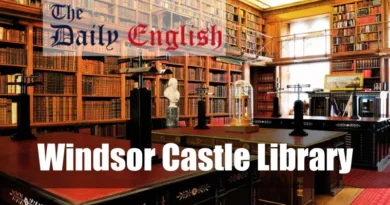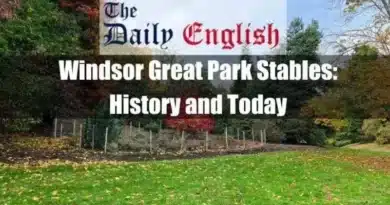I. Royal Collection Trust: Foundations and Evolution
Within the grand halls of British history, the Royal Collection Trust serves as a treasure trove of immense cultural significance. Spanning centuries of artistic riches and tangible echoes of past lives, it encompasses a vast collection of palaces, artworks, and artifacts meticulously preserved and increasingly shared with the world. However, this cultural behemoth wasn’t built overnight; its foundations lie deep within the centuries of royal patronage and the ever-shifting tides of power.

A. From Tudor Times to Civil War Disruption
The story begins not in sterile museums but within the turbulent reigns of Tudor monarchs. While there were items from before his time, Henry VIII significantly shaped the collection with his appreciation for Renaissance splendour. He amassed tapestries, jewels, and paintings that reflected his growing aspirations for an English empire. His daughter, Elizabeth I, continued this tradition, adorning her palaces with portraits of loyal supporters and symbols of her enduring reign.
However, the delicate tradition of royal collecting faced a major setback during the English Civil War. Oliver Cromwell’s Commonwealth government dispersed a significant portion of the Royal Collection, scattering valuable treasures across the land.
B. Restoration and New Directions
Yet, Charles II emerged from this period of upheaval, determined to reclaim his birthright and rebuild the Collection in grand style. Guided by the discerning eye of Peter Lely, a Dutch portrait master, he filled his court with paintings that echoed his reign’s opulent and sensual style.
William III and Mary II ushered in a new era for both the monarchy and the Collection itself. Their Dutch heritage brought a fresh aesthetic preference for landscapes and genre paintings, reflecting the changing social landscape of England. A genuine art enthusiast, George III further cemented the monarchy’s role as a patron of British talent. He acquired works from renowned artists like Hogarth, Reynolds, and Gainsborough while expanding the Collection’s global reach with treasures from India and China.
C. The Public and the Collection
The 19th century brought whispers of change. As republican ideals gained traction, public perception of royal extravagance shifted. Keenly aware of these changing sentiments, Queen Victoria embraced a more public-facing approach. Through carefully curated exhibitions and the limited opening of Buckingham Palace to select visitors, she laid the groundwork for making the Royal Collection more accessible to the public.
D. Preservation and Expansion
This legacy of public accessibility was furthered by Queen Mary, who prioritized conservation and scholarly research, recognizing the immense historical and artistic value of the Collection. She established the Royal Library and championed cutting-edge restoration techniques, safeguarding these treasures for future generations. Finally, Queen Elizabeth II, the longest-reigning British monarch, has not only maintained this commitment to accessibility but actively expanded it, bringing the Collection to wider audiences through digital initiatives and groundbreaking exhibitions.
E. A Legacy of Evolution
Thus, the Royal Collection Trust, established in 1993, embodies the culmination of this centuries-long evolution. It serves not just as a tangible legacy of monarchs and their passions but as a dynamic institution that continually adapts to the present demands and strives to share its treasures with the future. Now, let us delve deeper into the very substance of this extraordinary Trust, exploring the artworks it holds and the stories it whispers.
- Windsor Castle Opening Times: Everything You Need to Know.
- Windsor Castle Tickets: A Proven Comprehensive Guide.
- Windsor Great Park Stables: History and Today
II. Composition and Significance: A Kaleidoscope of Treasures
The Royal Collection Trust is not a monolithic entity but a vibrant tapestry woven from diverse threads. Within its expansive embrace lie treasures that span artistic disciplines, historical epochs, and continents, each whispering a unique tale to the attentive ear.
A. Fine Art: Where Brushstrokes Meet History
At the heart of the Collection lies a veritable pantheon of artistic geniuses. Renaissance masters like Raphael grace the canvas with their divine figures and ethereal landscapes—Rubens’s baroque dynamism clashes with the serene Dutch Golden Age masterpieces of Vermeer and Hals. Canaletto captures the shimmering allure of Venice, while Turner’s swirling skies evoke the untamed beauty of the English countryside. Even modern and contemporary titans like Hockney and Emin find their voices within these hallowed halls, reminding us that the Collection’s pulse beats with the present rhythm.
But the significance of these works transcends mere aesthetic appreciation. They serve as windows into the evolving tastes and patronage of successive monarchs. We see Henry VIII’s ostentatious self-promotion mirrored in Titian’s portraits, while Charles II’s hedonistic spirit dances across Lely’s sensual court portraits. Queen Victoria’s penchant for sentimentality finds expression in Landseer’s animal paintings, and Prince Charles’s environmental concerns resonate in Hockney’s sun-drenched landscapes. The Collection, then, becomes a living conversation between artist and monarch, canvas and crown, offering invaluable insights into the shifting sands of history.
- Windsor Castle Changing of the Guard: Where History Coming Alive.
- Windsor Castle Tour: A Comprehensive and Best Guide.
- Windsor Castle Tickets Advantage Card: Know Everything.
B. A Tapestry of Time: Beyond the Brushstroke
Art serves as the crown jewel of the Collection. Still, the tapestry of treasures extends far beyond—jewels encrusted with the tears of history glitter alongside intricate tapestries woven with forgotten stories. Furniture speaks of vanished conversations and the ghosts of laughter echo in gilded chambers. Porcelain from China and ivory from Africa stand as testaments to global connections forged by empires long past. Even seemingly mundane objects, a child’s doll or a soldier’s uniform, become poignant reminders of lives lived and battles fought.
These artefacts are not merely passive exhibits but active storytellers, weaving tales of monarchs and courtiers, triumphs and tragedies, everyday triumphs and quiet intimacies. A reportedly stained handkerchief whispers of the execution of Charles I, while a coronation robe embroidered with pearls and gems evokes the pomp and ceremony of Queen Victoria’s ascension. A child’s rocking horse, carved lovingly, reminds us of the tender moments hidden within the gilded halls of power.
C. Palaces: Where History Lives
The Collection’s narrative spills beyond the confines of canvases and showcases, finding a tangible home in the very bricks-and-mortar of royal residences. From the towering majesty of Buckingham Palace to the intimate charm of Sandringham House, each residence offers a distinct chapter in the royal saga.
Windsor Castle, a fortress steeped in legend, whispers of William the Conqueror and the ghosts of knights in shining armour. Hampton Court, with its sprawling gardens and Tudor grandeur, echoes with the laughter of Henry VIII and the scheming whispers of his court. The Palace of Holyroodhouse in Edinburgh, a testament to Scottish grandeur, stands as a silent witness to Mary Queen of Scots’ tragic fate. While the core collection grew considerably during the reigns of Tudor monarchs, there is evidence of items belonging to the Royal Collection from even earlier periods.
These residences are not merely architectural spectacles; they are living, breathing entities that embody the very essence of the monarchy. Their interiors, meticulously preserved and adorned with priceless art and furniture, offer a glimpse into the tastes and lifestyles of past generations. Walking through their halls is akin to stepping through a time machine, experiencing history not as a bookish abstraction but as a tangible reality.
- State Apartments at Windsor Castle: An Ultimate Guide.
- St. George’s Chapel at Windsor Castle in History & Today.
- Queen Mary’s Dollhouse at Windsor Castle.
Thus, the Royal Collection Trust transcends a mere collection of treasures. It’s a captivating tapestry woven from British history and culture threads. Across its canvases, artefacts, and palaces, we encounter artistic mastery and the grandeur of the monarchy and glimpses into the soul of a nation – its triumphs and tragedies whispered secrets, and enduring spirit.
III. Public Engagement and Access: Sharing the Crown Jewels
The Royal Collection Trust stands not just as a custodian of history but as a bridge between the past and the present. Sharing its treasures with the public forms the cornerstone of its mission, ensuring that these whispers of history resonate with future generations.
A. Unveiling the Vaults: Exhibitions and Public Programming
The Trust’s commitment to public engagement shines brightest in its dynamic exhibition program. Permanent displays at Buckingham Palace, Windsor Castle, and the Palace of Holyroodhouse offer curated glimpses into various facets of the Collection. From thematic exhibitions showcasing specific artists or historical periods to special displays highlighting recent acquisitions, there’s something to ignite the curiosity of every visitor.
Beyond the physical walls of the residences, the Trust embarks on ambitious travelling exhibitions, sharing its treasures with a global audience. From showcasing British monarchs through portraits and artefacts to exploring themes like royal fashion or patronage of the arts, these exhibitions foster cultural exchange and spark dialogues across continents.
But the Trust’s outreach extends far beyond static displays. Educational programs tailored to diverse audiences, from school children to senior citizens, bring the Collection to life through interactive workshops, lectures, and family activities. Online resources like digital exhibitions and virtual tours cater to those unable to visit in person, democratising access to the treasures and democratising access to the treasures.
B. Balancing Preservation with Access: A Delicate Dance
While sharing the Collection is paramount, the Trust faces the constant challenge of balancing accessibility with preservation. Priceless artworks and centuries-old furniture are inherently fragile, demanding meticulous care and controlled viewing conditions. The Trust employs a dedicated team of conservators who ensure the long-term survival of these treasures, employing cutting-edge techniques and adhering to strict protocols.
Furthermore, the Trust carefully manages visitor flow and implements measures to minimise wear and tear on delicate objects. This delicate dance between access and preservation requires constant vigilance and innovative solutions, ensuring that the Collection remains a vibrant part of the present while safeguarding it for future generations.
- Windsor Great Park: A Legacy of History, Nature, and Royal Heritage.
- Eton College Windsor: A Legacy of Excellence
- Frogmore House Windsor: A Royal Retreat Through Centuries
C. Reaching Every Corner: Catering to Diverse Audiences
The Trust recognises that its audience is not a monolithic entity. To truly fulfil its mission of inclusivity, it must cater to diverse needs and perspectives. Accessibility measures such as wheelchair ramps, tactile maps, and sign language tours ensure that people with disabilities can engage with the Collection. Family-friendly activities and interactive displays keep younger visitors engaged, while specialised programs cater to diverse cultural backgrounds and languages.
Furthermore, the Trust actively seeks feedback from its audience, engaging in community outreach initiatives and partnerships with local organisations. This dedication to inclusivity ensures that the Collection resonates with a broad spectrum of society, fostering a sense of shared ownership and responsibility for this national treasure.
D. Measuring the Impact: Beyond Tourist Footprints
The success of the Trust’s public engagement efforts cannot be measured solely by visitor numbers. Rigorous research and evaluation practices assess the impact of its programs on various metrics, including knowledge gained, emotional engagement, and sense of belonging. These insights guide the Trust in tailoring its offerings to maximise impact and ensure that its treasures spark curiosity, ignite imaginations, and inspire a deeper appreciation for history and culture.
So, while physical barriers might once have kept these treasures shrouded in exclusivity, the Royal Collection Trust has thrown open the gilded gates. Through innovative exhibitions, educational programs, and a commitment to inclusivity, it ensures that the whispers of history reach across the globe, reminding us that the legacy of the British monarchy is not solely etched in stone and crown jewels but woven into the very fabric of our shared cultural tapestry.
E. How do you get a Royal Collection Trust membership?
While the Royal Collection Trust doesn’t have a membership program, you can create a one-year pass by purchasing a ticket directly from them and requesting it be converted into a pass upon entry. Just ask a staff member to treat your ticket purchase as a donation, sign and validate the ticket, and hold onto it for free re-admission for a year to the standard admission area of the purchased location.
IV. The Future and Legacy: A Crown Shining Brighter Still
The Royal Collection Trust, having traversed centuries of history and evolution, now stands at a pivotal juncture. Its future promises the custodianship of a glorious past, actively shaping a vibrant cultural present and an inspiring future.
A. Vision and Strategic Direction: Charting a Sustainable Course
Financial sustainability forms the bedrock of the Trust’s future. Diversifying revenue streams through tourism, corporate partnerships, and innovative licensing agreements ensures adequate resources for conservation, research, and public engagement initiatives. Rigorous financial planning and responsible acquisition practices guarantee the Collection’s long-term stability, preventing it from becoming burdened by unsustainable debts or impulsive purchases.
Furthermore, the Trust embraces the digital realm, developing cutting-edge online platforms and virtual experiences that transcend geographical boundaries. This digital expansion broadens audience reach and generates novel revenue streams, ensuring the Collection’s sustainability and accessibility for future generations.
- The Long Walk, Windsor Castle Through Time
- Windsor Guildhall Near Windsor Castle: Past and Today
- The Windsor Castle Fire 1992: A Historical Catastrophe.
B. Collection Development: Responsible Growth for Lasting Impact
While preserving existing treasures remains paramount, the Trust recognises the importance of responsible acquisition for continued growth and relevance. Stringent criteria guide purchase decisions, prioritise works that complement existing holdings, fill historical gaps, and offer diverse perspectives. Emphasis is placed on acquiring pieces that resonate with contemporary audiences and spark critical dialogues about history, art, and society.
Additionally, the Trust actively pursues partnerships with other institutions and international collaborations, facilitating knowledge exchange and joint conservation efforts. This global engagement enriches the Collection’s narrative and showcases its significance on a world stage.
C. Engaging the Future: Innovation and Inclusivity
The Trust’s commitment to public engagement rests on something other than past laurels. It constantly seeks innovative ways to connect with audiences, particularly younger generations raised in a digital world. Interactive exhibits, augmented reality experiences, and gamified learning platforms are just a few tools employed to keep the Collection fresh and engaging for the 21st century.
Moreover, the Trust recognises the importance of inclusivity in shaping its future. Continued efforts are made to diversify staff and leadership, ensuring that the Collection is seen and actively shaped by representatives from diverse backgrounds and perspectives. This inclusivity extends to programming and outreach, ensuring everyone feels welcome and represented within the Trust’s walls.
D. An Enduring Symbol: Beyond Bricks and Brushstrokes
The Royal Collection Trust transcends the confines of museums and palaces. It symbolises British heritage, a testament to artistic genius, and a catalyst for cultural dialogue. It fosters national pride while inviting critical reflection on the complexities of history. It acts as a bridge between generations, reminding us of the echoes of the past that resonate in the present and shape the future.
More importantly, the Collection inspires. It ignites imaginations with tales of monarchs and masterpieces, ignites curiosity about past glories and societal transformations, and ignites a passion for art, history, and the shared human story. Through its dedication to preservation, access, and engagement, the Trust ensures that these flames of inspiration continue to burn brightly, illuminating the path forward for future generations.
V. Conclusion
In conclusion, the Royal Collection Trust is not just a static repository of treasures; it is a dynamic, living entity that shapes and is shaped by the ever-evolving world around it. As it embraces its future, it promises to remain a beacon of cultural richness, historical understanding, and artistic inspiration, leaving an indelible mark on the soul of Britain and the wider world.




